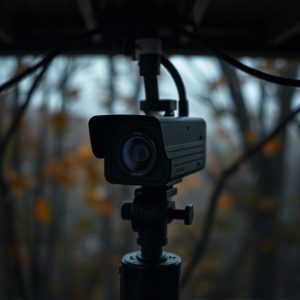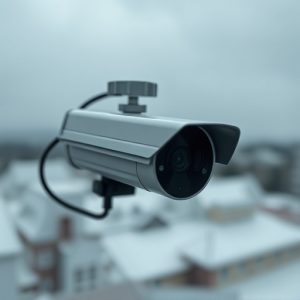Unveiling Hidden Invisibility: Testing and Detecting IR Cameras for Home Security
Invisible IR cameras offer advanced covert surveillance for home monitoring, disguised as everyday o…….
Invisible IR cameras offer advanced covert surveillance for home monitoring, disguised as everyday objects and using infrared light undetectable by the human eye. They capture clear images in darkness via IR LEDs and wirelessly transmit data to connected devices. In response, a novel visible light detection method is proving effective against hidden cameras, analyzing lighting and shadow patterns to identify suspicious setups. Implementing an invisible IR camera detection system requires addressing privacy, authorization, and software updates, along with secure mounting and covering strategies for discreet, robust security in home monitoring applications.
Uncover the subtle secrets of your surroundings with our guide to identifying disguised camera technology, particularly invisible IR cameras used in home monitoring. We explore how these advanced devices operate without drawing attention, hidden within everyday objects. This article delves into a unique testing method utilizing visible light to expose such hidden cameras. Additionally, we provide practical considerations for implementing IR camera detection in your home, ensuring a secure and private living environment.
- Understanding Disguised Camera Technology: How Invisible IR Cameras Operate
- Lights as a Testing Method: Uncovering Hidden Cameras with Visible Light
- Implementation and Security Considerations for IR Camera Detection at Home
Understanding Disguised Camera Technology: How Invisible IR Cameras Operate
Disguised camera technology has advanced significantly, with one of its most innovative forms being invisible IR cameras. These devices operate by utilizing infrared (IR) light, which is outside the visible spectrum for human eyes but can be detected by specialized sensors. In the context of home monitoring, these cameras offer a covert surveillance solution that remains hidden from potential intruders.
Invisible IR cameras are designed to blend seamlessly into their surroundings, often mimicking everyday objects like light switches, fire alarms, or even decorative items. They capture images and videos using IR LEDs that emit light in the infrared range, enabling clear visualization of scenes in complete darkness. The captured data is then transmitted wirelessly to a connected device, allowing users to monitor their homes remotely. This technology ensures discreet home monitoring without compromising aesthetics or raising suspicions.
Lights as a Testing Method: Uncovering Hidden Cameras with Visible Light
In the realm of home monitoring and security, the detection of hidden cameras has become a significant concern for privacy advocates. One innovative testing method gaining traction is the use of visible light as a tool to uncover these often-disguised surveillance devices. Unlike infrared (IR) technology commonly used by invisible IR cameras, this approach leverages regular lighting conditions to reveal camera presence without relying on specialized equipment.
By examining patterns of illumination and shadows cast by light sources in various settings, trained professionals can identify unusual configurations indicative of hidden cameras. This technique is particularly effective in domestic environments where lights are frequently on, providing ample natural or artificial light for analysis. The visible-light method offers a practical solution for homeowners seeking to safeguard their privacy from covert surveillance, making it an essential tool in the arsenal of home monitoring strategies.
Implementation and Security Considerations for IR Camera Detection at Home
Implementing an invisible IR camera detection system for home monitoring requires careful consideration of several security aspects. Since infrared (IR) cameras operate in the dark, their presence can be difficult to identify, making them a popular choice for covert surveillance. To counter this, advanced detection methods are needed. One approach involves utilizing specific IR lighting patterns that are imperceptible to the human eye but can be recognized by specialized sensors or software algorithms. This method not only aids in identifying hidden cameras but also adds an extra layer of security to the home monitoring system.
Security considerations include ensuring the privacy and confidentiality of residents, as well as preventing unauthorized access to the detection system itself. Regular updates and patches for any software used in detection are crucial to address vulnerabilities. Additionally, physical measures such as secure mounting and covering strategies can further enhance the effectiveness of IR camera detection while maintaining a discreet profile, ensuring an invisible yet robust security setup for home monitoring applications.
The hidden nature of invisible IR cameras makes them a significant concern in home monitoring, but with the right tools and methods, such as using visible light testing, their presence can be detected. By understanding how these cameras operate and implementing security considerations, homeowners can ensure a safer and more private living environment. This technology highlights the importance of staying informed and proactive in securing personal spaces in today’s digital age.


